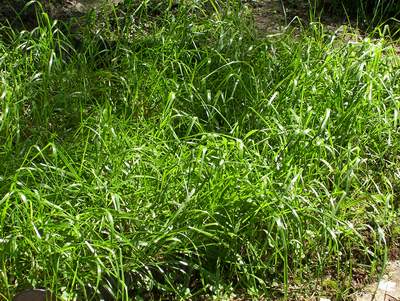Sweet grass
[size=75]From Wikipedia, the free encyclopedia [/size]
Sweet grass (Hierochloe odorata), also known as Sweetgrass, Holy grass, buffalo grass, Vanilla grass, Manna grass, Seneca grass, Mary’s grass, Zebrovka, or Bison grass, is an aromatic herb which grows in northern Eurasia and North America. It is used in herbal medicine and manufacture of alcoholic beverages (see Żubrówka). It owes its specific aroma to the presence of coumarin.
Habit: Very hardy native perennial. Native to North America as well as Europe. Grows to about 60 cm in height, leaves grow 60 cm long by late summer. Base of leaves, just below soil surface is broad and white, without hairs, underside of leaves are shiny, no hairs
Propagation: Easiest by cutting out plugs from established plants. Grown in sun or partial shade, they do not like drought.
Distribution: Northern America: Canada; New England States. Asia-Temperate: Europe: from Switzerland north. Only one site in Ireland, and four counties in Scotland; making it very rare in the British Isles.
Harvesting: Cut grass in early to late summer at the desired length, hang to dry in sun for a few days. To make braids, simply place the dried sweetgrass in warm water for a few minutes, braid and hang out of the sun to dry. Sweetgrass harvested after the first frost has little or no scent.
Sweet grass was strewn before church doors on saints’ days in northern Europe, presumably because of the sweet smell that arose when it was trodden on. It was used in France to flavor candy, tobacco, soft drinks, and perfumes. Widely used in neo-pagan practice (syncretized from North American indigenous practice). In Europe, the species H. alpina is frequently substituted or used interchangeably. In Russia, it was used to flavor tea. It is still used in flavored vodka, the most notable example being Polish Żubrówka.

